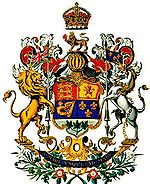
September 1955 to June 1964
Trans-Canada Air Lines (TCA)
CF-TGV - c/n 59 - a V.724 series Viscount
Canada registered
November 1952
An order was placed by Trans-Canada Air Lines (TCA) for fifteen Type 724 aircraft at a total cost of Can$11,500,000. This was the fourteenth one built.
Production Aircraft No. 71 - the 71st production Type 700 series Viscount built,
was the 38th Viscount fuselage assembled at Hurn, Bournemouth, Hampshire, England,
and the 40th Viscount assembled at Hurn, Bournemouth, Hampshire, England.
Production Order No. F14/724. Sales Order No. F14/51B. Stock Order No. F08/22B.
2 February 1955
Fuselage assembly commenced at Hurn Airport, Bournemouth, Hampshire, England.
21 March 1955
TCA issued technical instruction V-05.04-1/1 to apply the word 'Viscount' to the tail section in 8.5 inch high red letters edged in white at the first opportunity.
22 April 1955
Fuselage to Erecting Shop 'E' at Hurn Airport, Bournemouth, Hampshire, England.
2 June 1955
TCA issued technical instruction V-31.02-2/5 to apply the word 'Viscount' to the inside of the passenger loading door in 4 inch high red letters edged in white at the first opportunity.
31 August 1955
First flight from Hurn Airport, Bournemouth, Hampshire, England.
It was fitted with Rolls-Royce Dart RDa3 Mark 506 engines.

Royal Crest of Canada
12 September 1955
Arrived at the Society of British Aircraft Constructors (SBAC) air show at Farnborough Airfield, Hampshire, England to conclude the day's flying programme, and was then flown on each subsequent day. For some reason the Royal Crest of Canada was missing from the rear door.
14 September 1955
Aircraft passed off by TCA inspectors as completed and ready for delivery.
The word 'Viscount' had not been added to the tail at this stage.
15 September 1955
Departed from Hurn Airport, Bournemouth, Hampshire, England on delivery to Trans-Canada Air Lines (TCA) with fleet number '614'.
After arriving at Prestwick Airport, Ayrshire, Scotland to refuel it departed to Keflavik Airport, Iceland (743 nautical miles) but returned with a technical problem and stopped overnight.
16 September 1955
Departed from Prestwick Airport, Ayrshire, Scotland to Wisley Airfield, Surrey, England.
This was obviously needed to rectify whatever technical problems they had that couldn't be rectified at Prestwick.
Later that same day they departed from Wisley Airfield, Surrey, England back to Prestwick Airport, Ayrshire, Scotland where they refuelled.
Departed from Prestwick Airport, Ayrshire, Scotland to Keflavik Airport, Iceland (743 nautical miles) where they refuelled and stopped overnight.
17 September 1955
Departed from Keflavik Airport, Iceland to Bluie West One (BW1) Airfield, Narsarsuaq, Southern Greenland (804 nautical miles) where it stopped for fuel.
BW1 was built during WWII to assist the transfer of military aircraft from North America to Europe and was opened in January 1942.
It then departed to Goose Bay Airport, Newfoundland & Labrador, Canada (672 nautical miles).
Arrived at Dorval International Airport, Montreal, Province of Quebec, Canada (810 nautical miles).
The cabin seating was installed in Canada, as the seats used by TCA were of American manufacture.
The cabin was fitted out with 40 seats which was a reduction from the original 48 seat specification and provided more leg room.
This was heavily marketed and resulted in a high load factor compared to the 18 seat Douglas DC-3 that it replaced on some routes.
July 1956
Cabin interior changed to a two class 44 seat arrangement.
10 July 1957
TCA issued instructions that all Viscounts would be repainted in a 'White Top' livery when a suitable maintenance period became available.
22 August 1959
Ground accident reported. No details known so please contact information@vickersviscount.net if you can help.
31 August 1960
Total time 13,169 hours and 10,159 total landings.
1 June 1964
Transferred to Air Canada due to a corporate name change.
|



